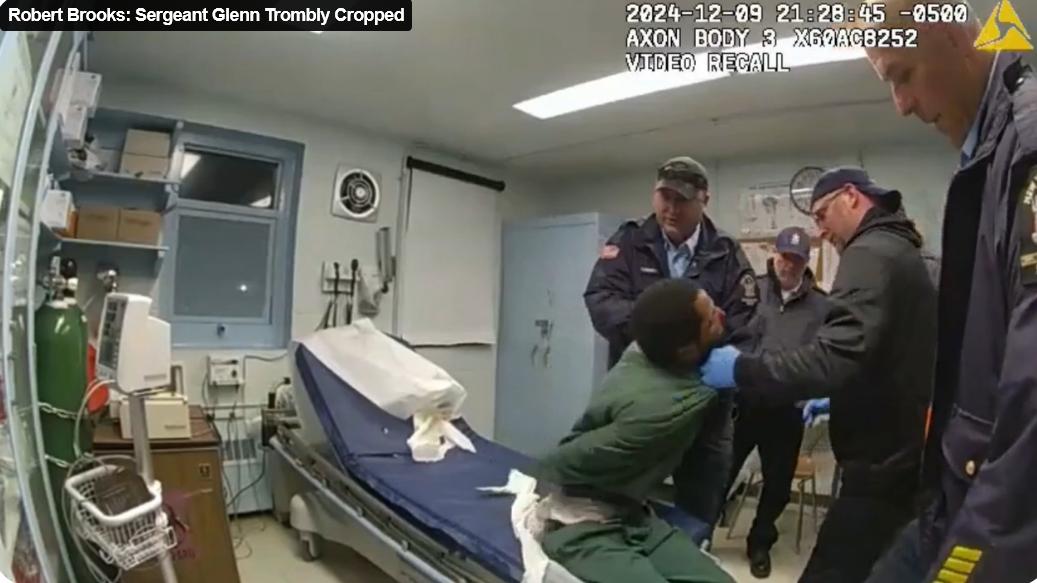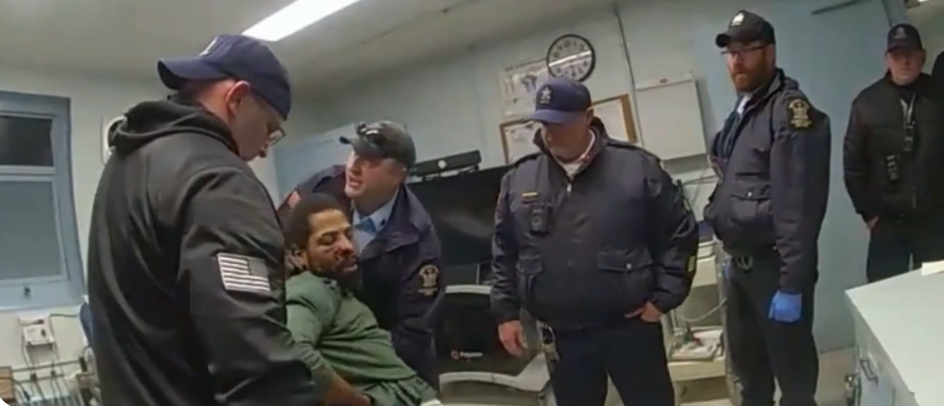I think in Michael’s case they made the classic mistake of taking away a lot of important tissue and structure and then the nose collapsed. So they had to try and build it back up.
(The good doctor’s in the House).
At one time African Americans knew that if they went to a plastic surgeon unfamiliar with Black skin they could end up with keloids.Â
Until recently many ethnic people—which include most non Caucasians—have avoided plastic surgery due to keloiding. Fortunately more and more African American physicians are getting into plastic surgery. Out of 7000 plastic surgeons, there are about 100 existing African American plastic surgeons — one among them is renowned plastic surgeon Dr. Anthony Griffin who is an authority on ethnic skin types—although he operates on Caucasians as well—a pioneer in scar-free surgery, and one of the top surgeons on the ABC program “Extreme Makeover.â€?
Born in Kenosha, Wisconsin, Dr. Griffin attended Brown University in Rhode Island, UCLA in California and medical school in St. Louis. “By Jr. High, I knew I would go into medicine. I saw an article in Ebony magazine featuring plastic surgery and though I was considering pediatrics, I chose plastic surgery,� he says. “I’ve been able to fulfill both goals in a way because I am involved with Operation Smile. I try as often as I can to travel overseas to Africa, Asia, Middle East, nearly everywhere and operate on children with birth defects such as cleft lips, burns, deformities, etc. There is no charge for this and I must admit that it is one of my most favorite things to do.�
Most doctors have to go through four years of college, four years of medical school, five years of general surgery and two years of plastic surgery before specializing in reconstructive and cosmetic procedures such as breast reconstruction, repairing accident victims, burn reconstruction, and cosmetic surgery. In a way, plastic surgeons have to be artists. “You have to have an eye for proportion and be able to see what you are going to do before doing it. Essentially, you are an artist. The human form and human body is probably the most difficult medium to sculpt,â€? says Griffin. “Generally, I will take a picture and draw on the picture and compare what the patient looks like versus what they want to look like.Â
Knowing what the patient wants to look like gives me an artistic goal. Some patients may want a certain celebrity feature, so I will try and sculpt a similar feature. If I have an African American patient who wants a nose job, I don’t try to take away their ethnic features, merely to improve upon it. I specialize in operating on people of color. It’s often very difficult to do because colored skin is very thick and there is very little support structure, so you often have to build it up as well as take away some things.�
He continues: “Otherwise you may end up with a Michael Jackson type look. Clearly his doctor didn’t know how to manage people of color. I think in Michael’s case they made the classic mistake of taking away a lot of important tissue and structure and then the nose collapsed. So they had to try and build it back up. When you are doing ethnic noses its very important to first build certain parts of the structure to support it so it doesn’t collapse and then you take away areas that are thick or large.�
African American skin tends to be thicker and more vulnerable to scarring because it’s more oily than white skin. “One of the big concerns African Americans and people of color have when getting plastic surgery is the tendency for darker skin to keloid,� the doctor notes. “I have developed procedures and techniques that involve minimal scarring. I often use an endoscope which is like a telescope that allows me to operate through very small incisions that prevents me from having to make a big long scar. I tie my incisions in places where people tend not to keloid. I have been working with Johnson & Johnson to develop a line of suture material that wont react to ethnic skin negatively which heretofore has been one of the biggest problems.�
Griffin’s surgeries have been featured on CNN, Access Hollywood, “E,� the Discovery Health Channel, and in Time Magazine and other media outlets.
The majority of procedures most people request when getting plastic surgery is face lifts, nose jobs, eyelids, liposuction, breast reduction and breast augmentation. “I do all of the aforementioned plus a signature procedure known as the Brazilian butt lift for people with flat butts,â€? adds Griffin. “I take fat from around patient’s waist and put it in their buttocks to sculpt it. There is also liposuction for people who want to reduce their butts.â€? He is a board certified Beverly Hills physician. Dr. Griffin is the author of “Surgery Without Scars: A Worry-Free Multi-Cultural Guide to Plastic Surgery Today.â€?Â
“I wrote that book about four years ago to make people aware that there are doctors like myself who knows how to manage ethnic skin. It answers a lot of questions for patients and also helps other doctors know how to treat patients and some of the scars afterwards. I am also writing a book called ‘Extreme Satisfaction’ which is about the psychological and spiritual reason people seek plastic surgery,� remarks the talented surgeon.
In 1977, the Federal Trade Commission ruled that plastic surgeons are not the only people who can call themselves plastic surgeons. Therefore, a GYN or dentist or neurosurgeon can say they’re a plastic surgeon even though they have no training in plastic surgery. So it’s essential that people make sure the plastic surgeons they go to are board certified plastic surgeons trained in plastic surgery. Ethnic people should make certain they acquire a surgeon trained to handle ethnic skin.
Married, Dr. Griffin is a regular on ABC’s Extreme Makeover. This season fans will see him doing the majority of cases on the show. He also paints and sculpts during his downtime and fans may soon see Dr. Griffin on his own reality show.
Also see: www.griffinmd.com/about.html
To subscribe to New York’s favorite Pan-African weekly investigative newspaper please click on “subscribe� on the homepage or call (212) 481-7745. For advertisements or to send us a news tip contact [email protected] “Speaking Truth To Empower,� is our motto.





